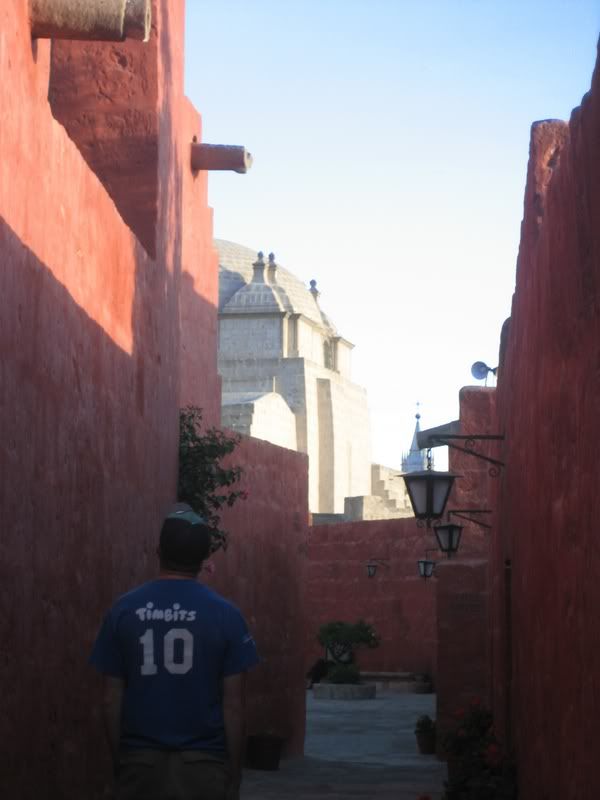 After a day on 2 busses and passing through no less than 5 police check points, we sped down the winding canyon roads to Arequipa. It is a large colonial city that spreads across a huge valley, framed on all sides by huge mountain ranges and volcanoes.
After a day on 2 busses and passing through no less than 5 police check points, we sped down the winding canyon roads to Arequipa. It is a large colonial city that spreads across a huge valley, framed on all sides by huge mountain ranges and volcanoes.
We were exhausted after all the traveling, so we planned to sleep in our first day, but were rudely awakened at 6:34am by the sound of off-key bells clanging. Slightly annoyed we rolled over only to be awoken 7 minutes later by the same bells. It might have been ok if the bells were pretty sounding, or if it had been a Sunday morning, but no luck.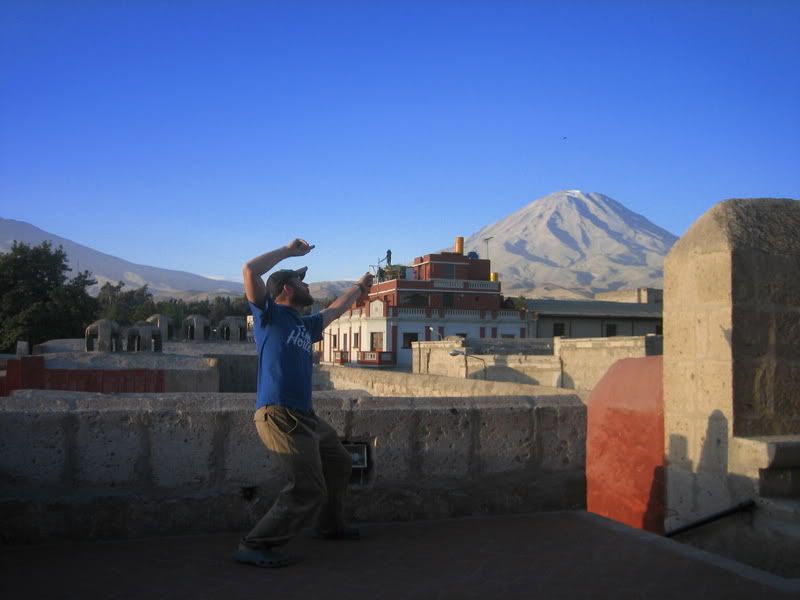 We visited El Monestario del Santa Catalina and wandered around the streets and rooms that the nuns lived in for hundreds of years. A small section in the North end is now locked and thirty or so nuns still live. The monestary was very large and it would have been very easy to get lost and wander around for hours. Small rooms lead to other small rooms and small kitchens and other streets. Unfortunately some doors were locked and the stairs were all blocked off, so we didn't get to explore too much. The walls have more recently been painted in vibrant blues, reds and oranges, making for some fun photos.
We visited El Monestario del Santa Catalina and wandered around the streets and rooms that the nuns lived in for hundreds of years. A small section in the North end is now locked and thirty or so nuns still live. The monestary was very large and it would have been very easy to get lost and wander around for hours. Small rooms lead to other small rooms and small kitchens and other streets. Unfortunately some doors were locked and the stairs were all blocked off, so we didn't get to explore too much. The walls have more recently been painted in vibrant blues, reds and oranges, making for some fun photos.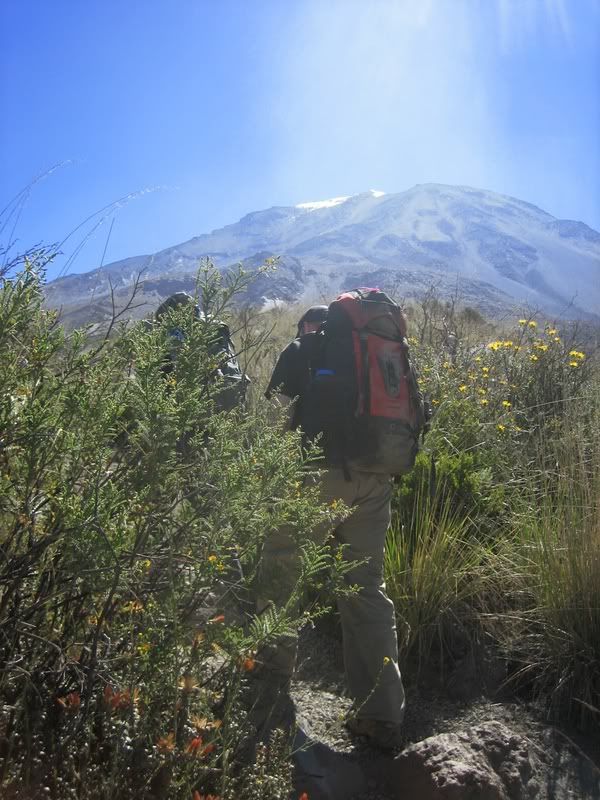 Two days ago we left our hostal bright and early to climb the nearby volcano, El Misti. We were picked up by our guide, Angel, and after being dropped off at the base of the mountain, we hiked for about 6 hours before reaching our camp for the night. From that height we could see the sun set over the mountains and watch as the city lights below turned on. As the sun disapeared we layered up in everything we owned (and more gear provided by the guiding company) and ate the hot soup Angel had made. We were in our tent by 7, and after a few restless hours of 'sleep' we were woken up at 12am for breakfast. We began our accent of El Misti by 12:30. At that altitude we walked with the light of our flashlights slowly behind our guide, being careful to safely place our feet on stable rocks. The higher we zig-zagged up the side, the more frequent our breaks became and the colder the wind. We each napped a few times on those breaks, I wished I was back in bed. Around 5am we could start to see the sky light up and as the sun rose higher we could see the volcano's huge shadow left over the city.
Two days ago we left our hostal bright and early to climb the nearby volcano, El Misti. We were picked up by our guide, Angel, and after being dropped off at the base of the mountain, we hiked for about 6 hours before reaching our camp for the night. From that height we could see the sun set over the mountains and watch as the city lights below turned on. As the sun disapeared we layered up in everything we owned (and more gear provided by the guiding company) and ate the hot soup Angel had made. We were in our tent by 7, and after a few restless hours of 'sleep' we were woken up at 12am for breakfast. We began our accent of El Misti by 12:30. At that altitude we walked with the light of our flashlights slowly behind our guide, being careful to safely place our feet on stable rocks. The higher we zig-zagged up the side, the more frequent our breaks became and the colder the wind. We each napped a few times on those breaks, I wished I was back in bed. Around 5am we could start to see the sky light up and as the sun rose higher we could see the volcano's huge shadow left over the city.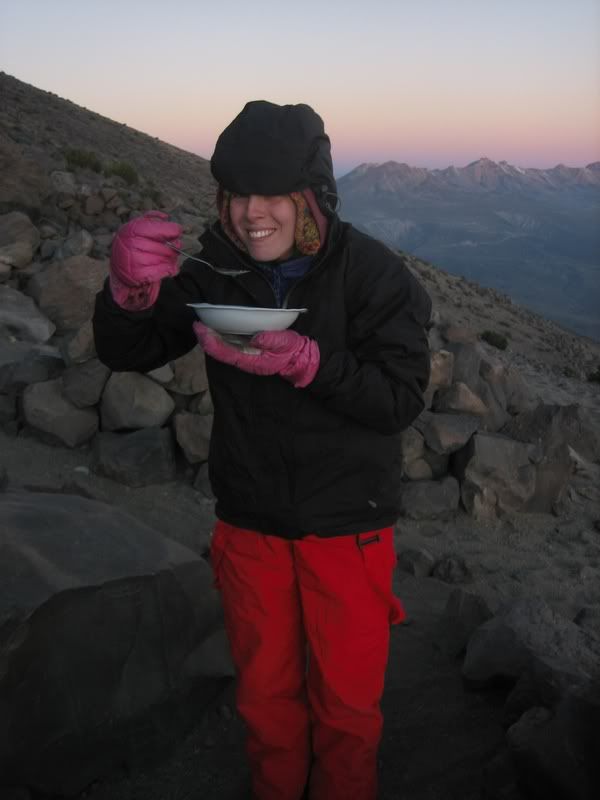 We reached the rim of the crater around 7am. I bet if I could have squinted my eyes a little more I could have seen the ocean through all the smog. Exhausted, I decided that that was the highest I was climbing that morning, and so as I napped in the sun on rocks, Colin and Angel finished the climb, about one hour more to the top, 5825 meters. A large cross was put at the top of El Misti back in the early 1900's and it still stands
We reached the rim of the crater around 7am. I bet if I could have squinted my eyes a little more I could have seen the ocean through all the smog. Exhausted, I decided that that was the highest I was climbing that morning, and so as I napped in the sun on rocks, Colin and Angel finished the climb, about one hour more to the top, 5825 meters. A large cross was put at the top of El Misti back in the early 1900's and it still stands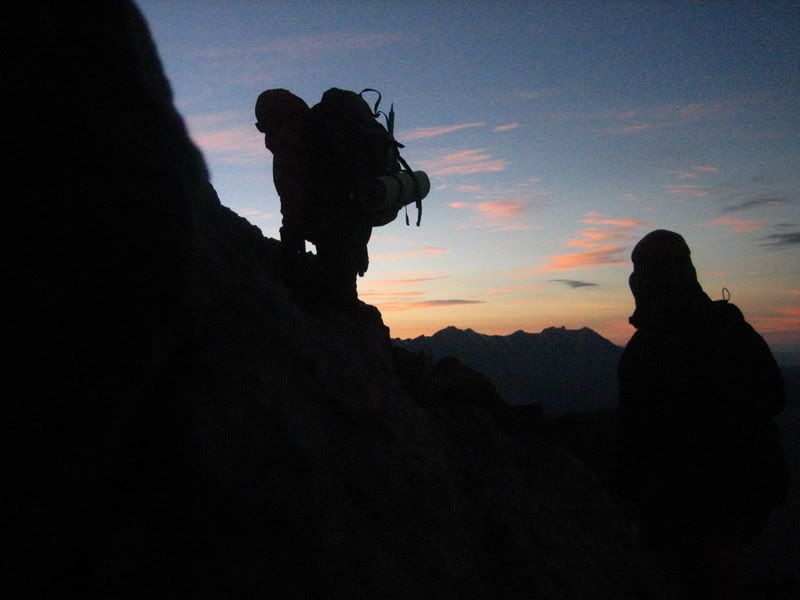 there now, decorated with colourful scarfs and other garbage people didn't want to carry down. Colin could see smoke from the crater and the smell of sulpher was detectable. The volcano isn't currently active (we're not that crazy), but is classified as semi-active.
there now, decorated with colourful scarfs and other garbage people didn't want to carry down. Colin could see smoke from the crater and the smell of sulpher was detectable. The volcano isn't currently active (we're not that crazy), but is classified as semi-active.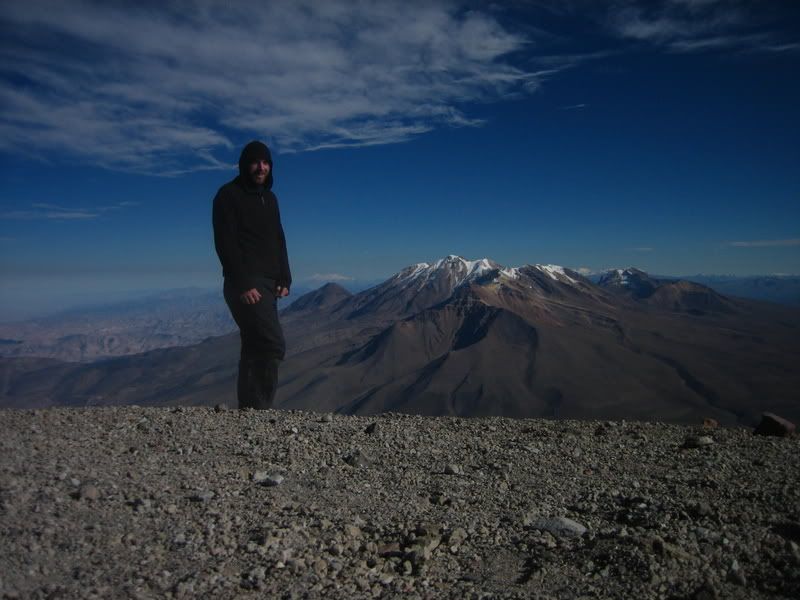 The decent to our campsite took 45 minutes. We slid and jumped down the sand and scree, filling our boots with volcanic dust. After a necessary nap, we packed up all our gear and hiked/slid down the rest of the mountain to our car waiting below. Knees shaking we arrived at the car and were back in our hostal an hour later. It was an exhausting experience, but the views were amazing, and it was a great excuse to eat cookies and chocolate for breakfast. We slept really well last night, only to be woken up again by the annoying-stupid bells.We are off to visit the canyons and surrounding villages for the next few days. Perhaps we'll even see a condor!
The decent to our campsite took 45 minutes. We slid and jumped down the sand and scree, filling our boots with volcanic dust. After a necessary nap, we packed up all our gear and hiked/slid down the rest of the mountain to our car waiting below. Knees shaking we arrived at the car and were back in our hostal an hour later. It was an exhausting experience, but the views were amazing, and it was a great excuse to eat cookies and chocolate for breakfast. We slept really well last night, only to be woken up again by the annoying-stupid bells.We are off to visit the canyons and surrounding villages for the next few days. Perhaps we'll even see a condor!
This is the view from the top of El Misti.
Us coming down from the top.
Sunday, May 13, 2007
Subscribe to:
Post Comments (Atom)
1 comment:
I just thought that the 'near' had been there all along and I'd never noticed.
How old are those nuns?
-Stu
Post a Comment